In The Sky
-

The Elephant’s Trunk
A narrowband, false-color view of the Elephant Trunk Nebula (IC 1396A) in Cepheus. The colors correspond to light emitted by sulfur (red), hydrogen (green), and oxygen (blue). Credit: Billy Teets Up to our north in the constellation Cepheus, the king, lies a cloud of gas and dust 100 light-years… Read MoreDec. 17, 2025
-
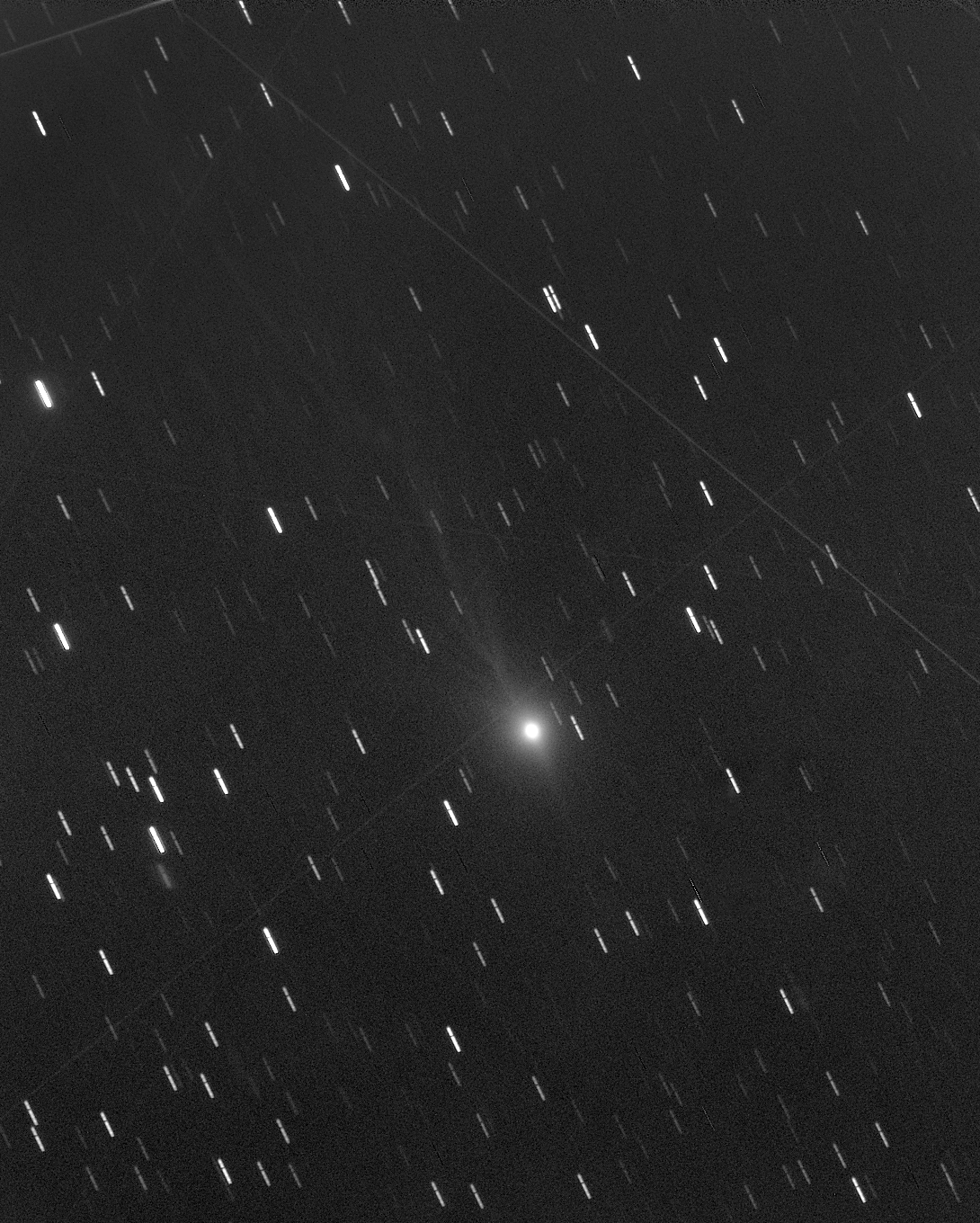
TWO Comets Named ATLAS
Comet 3I/ATLAS appears near the center of the this long-exposure composite. Fifteen two-minute exposures were processed and digitally added (centering on the comet) so that fainter details would become visible. Since the comet was moving during the shorter exposures, aligning all images to the comet results in the stars… Read MoreNov. 19, 2025
-
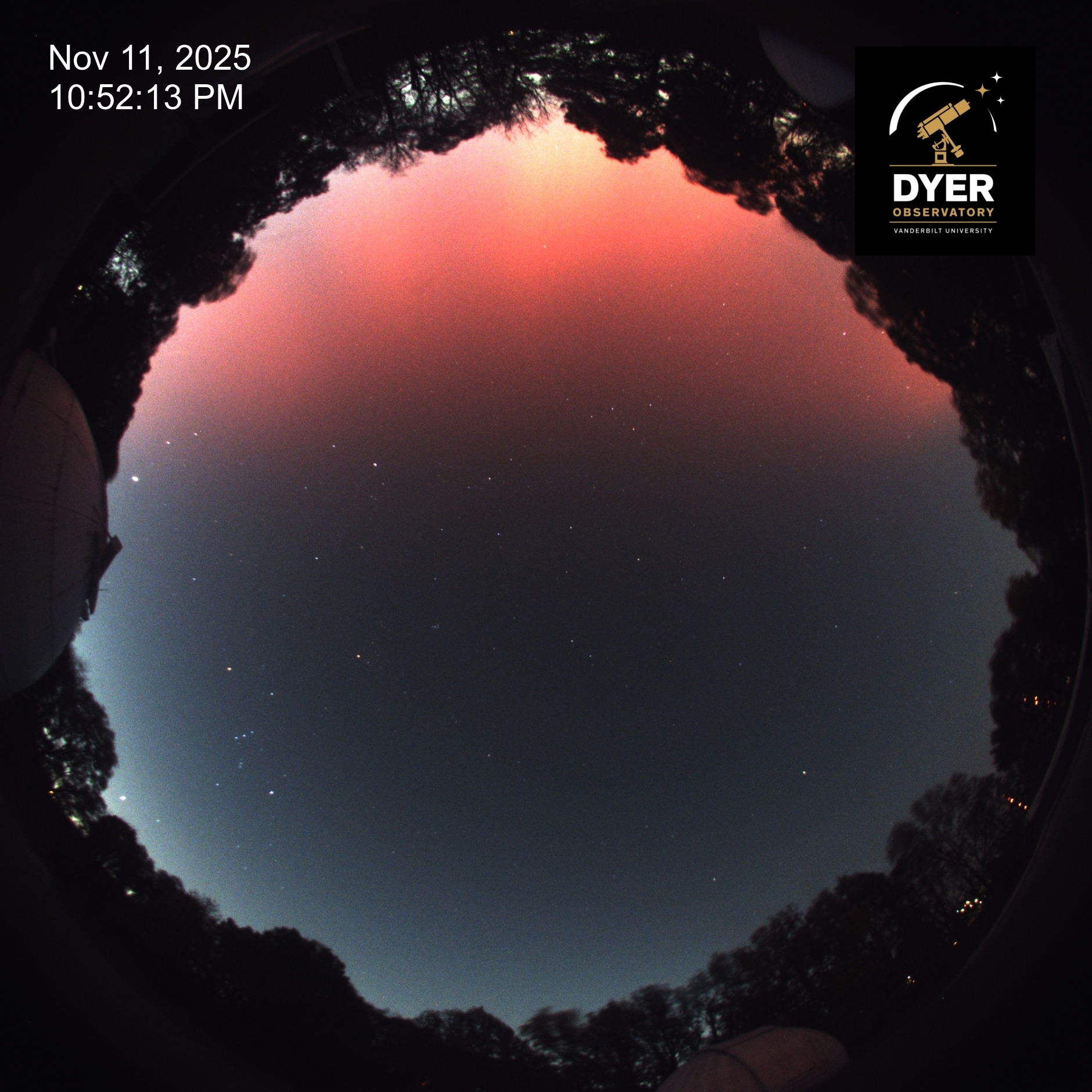
Northern Lights Dance Above Dyer
A powerful G4 geomagnetic storm erupted on the night of November 11, 2025, thanks to two coronal mass ejections (CMEs) slamming into Earth. This will be the third time during the present solar maximum in which aurorae have been observed from Brentwood, TN. In this all-sky view from a… Read MoreNov. 19, 2025
-
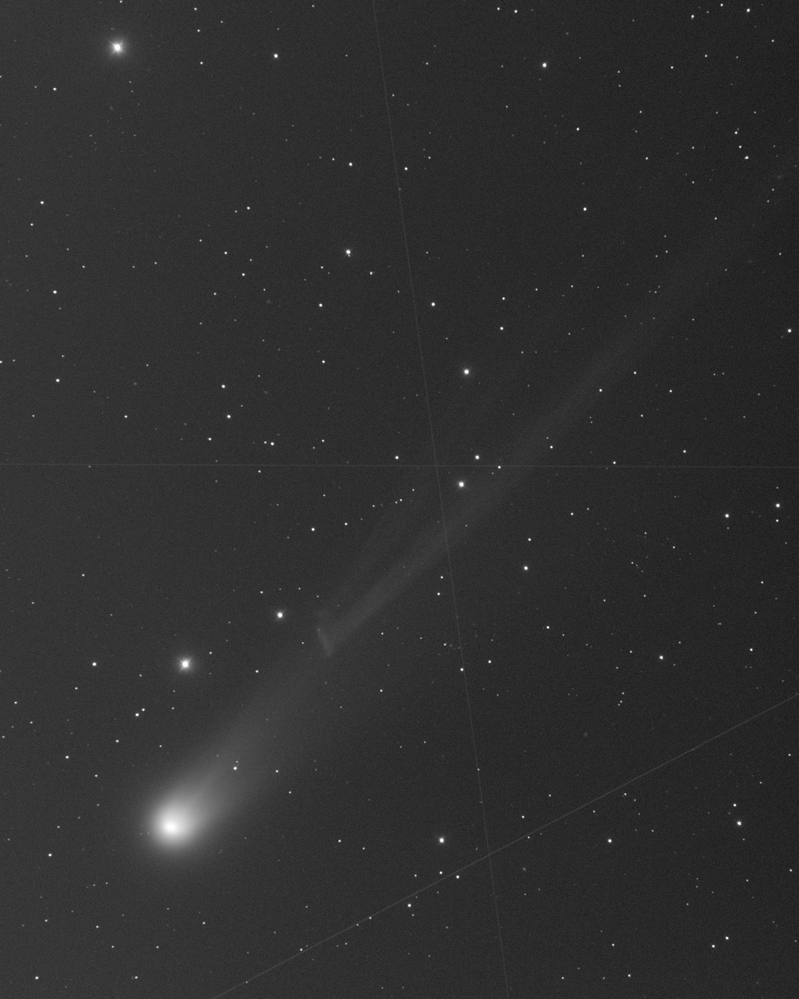
A Double Dose of Comets
Comet C/2025 A6 (Lemmon) was observed from Dyer Observatory just prior to sunrise on October 5, 2025. These two-minute exposures show how rapidly comets move among the background stars and how quickly the dust tail can change. Numerous passing satellites left streaks in several of the frames, and the… Read MoreOct. 28, 2025
-
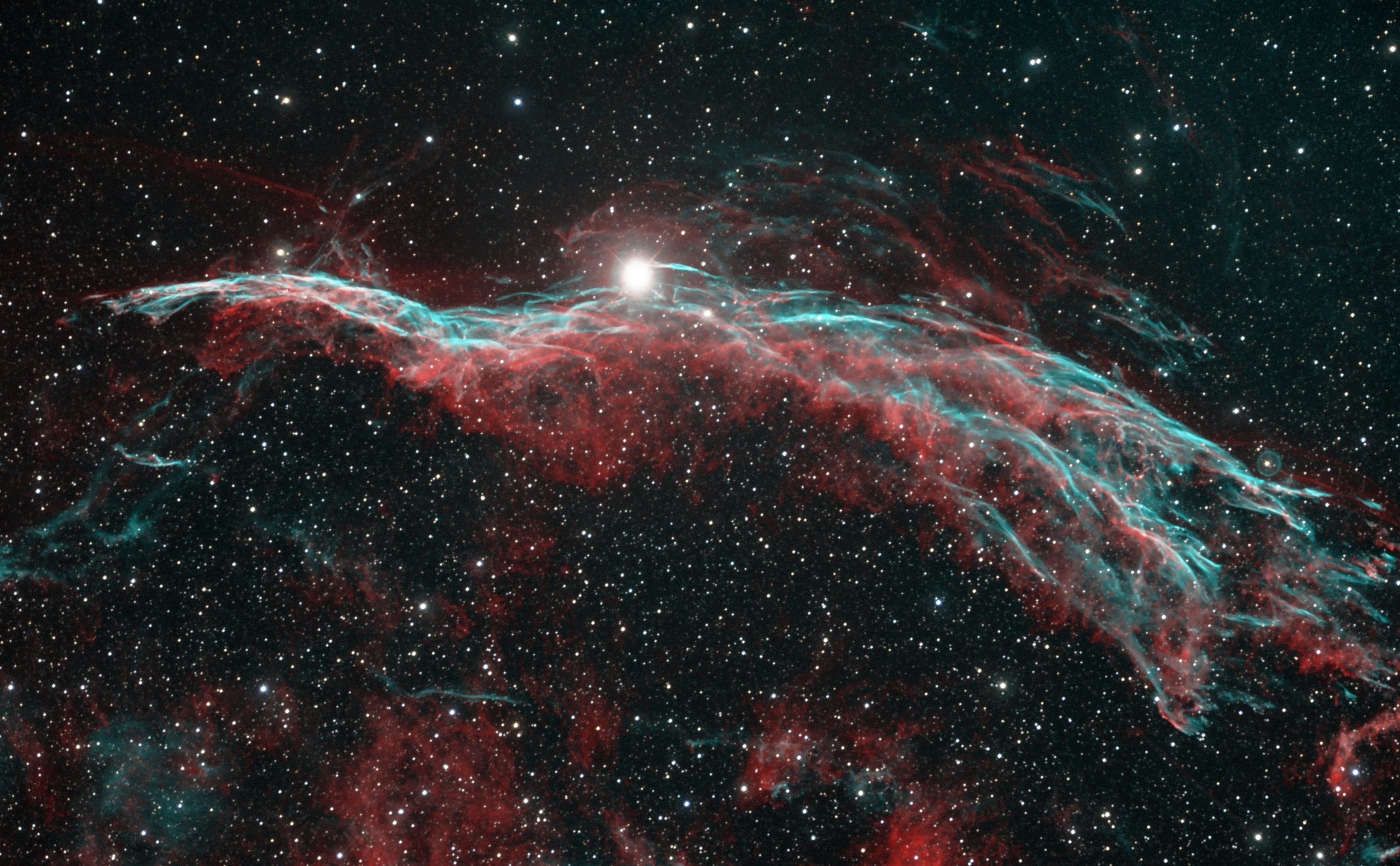
The Witch’s Broom Nebula
The Witch’s Broom Nebula is part of a large supernova remnant known as the Cygnus Loop. The dominant red and teal emission is due to hydrogen and oxygen atoms. The image above is a composite of nearly 10 hours of exposure with a color camera with approximately… Read MoreOct. 27, 2025
-

Capturing the Apple Core
The Dumbbell Nebula. Credit: Billy Teets In the lesser-known constellation of Vulpecula, the fox, lie the well-known remains of a small, sun-like star that perished fairly recently, at least on cosmic timescales – the Dumbbell Nebula. Shorter exposure photographs usually only capture the brighter lobes of gas, helping to… Read MoreSep. 29, 2025
-

Interstellar Comet 3I/ATLAS Speeds By
Interstellar comet 3I/ATLAS (indicated by the white marker) appears as a faint smudge rapidly moving against the background stars in this animation from Dyer Observatory’s Seyfert Telescope. During the five minutes between each of the frames, the comet moved approximately 10,000 miles. Click on the image for a higher… Read MoreAug. 26, 2025
-
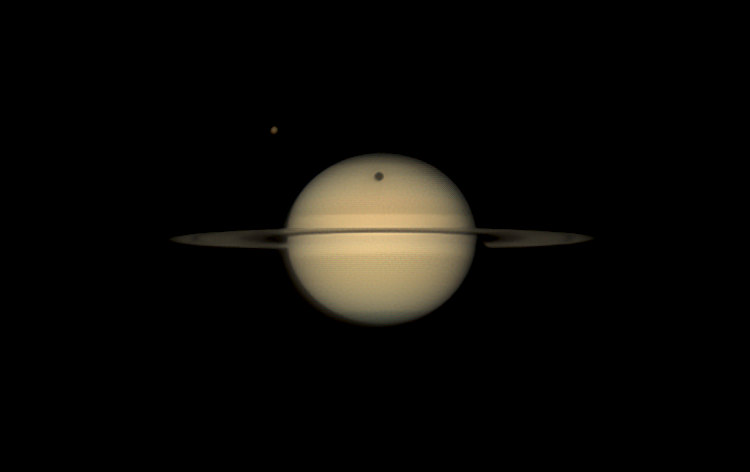
Dyer Catches a Rare Eclipse on Saturn
In the early morning hours of August 19, 2025, Saturn’s largest moon Titan cast a shadow on Saturn’s globe. This view is a stacked image obtained by Dyer Observatory’s Seyfert Telescope. Credit: Billy Teets In the early morning hours of Tuesday, August 19, Saturn’s largest moon, Titan, passed between… Read MoreAug. 26, 2025
-

The Great Cluster of Hercules
The Great Hercules Cluster (M13) is one of the brightest deep-sky objects and can even be seen by the naked eye on a dark summer night. Credit: Billy Teets We often think that in order to see pretty much anything in the sky other than the Moon or some… Read MoreJul. 29, 2025
-
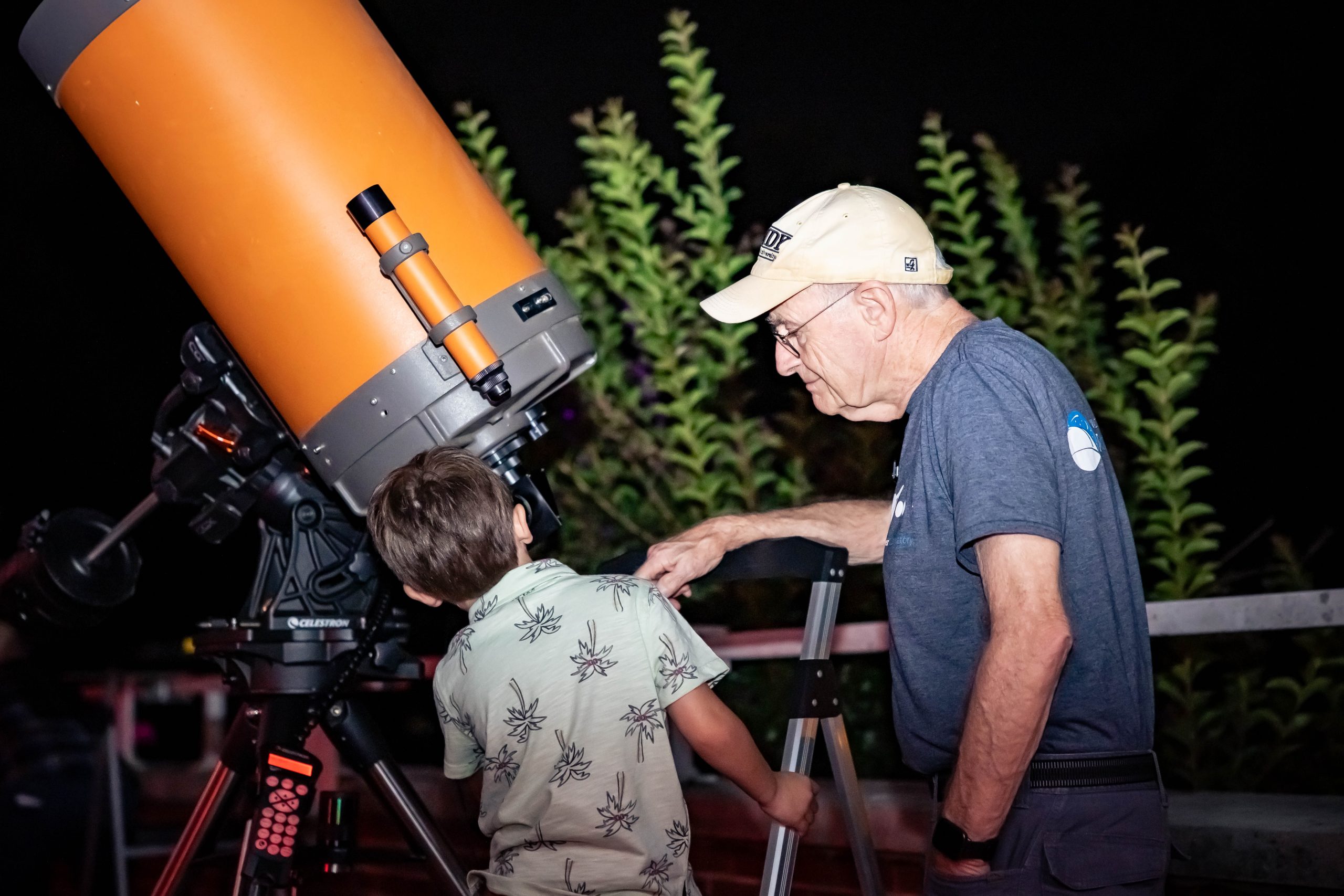
Oh, The Things You’ll See!
Dyer Telescope Night in Nashville, Tennessee, on June 13, 2025. Photo by Alondra Moya One of the highlights each month at Dyer Observatory is Telescope Night. During these events, visitors come to one of two hour-long sessions to get firsthand views of some of the wonders of the cosmos,… Read MoreJun. 26, 2025